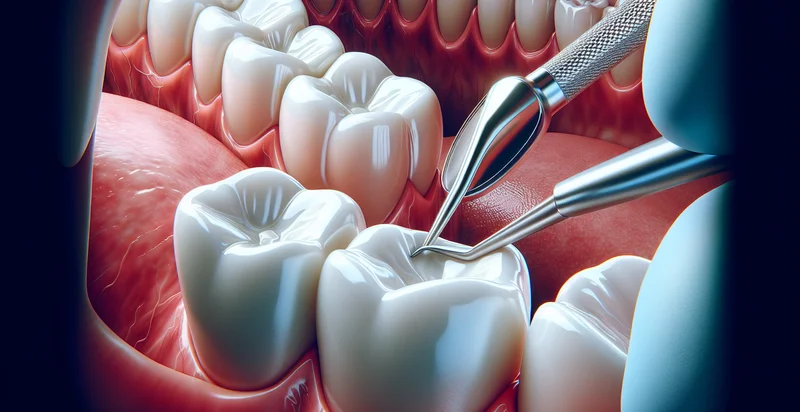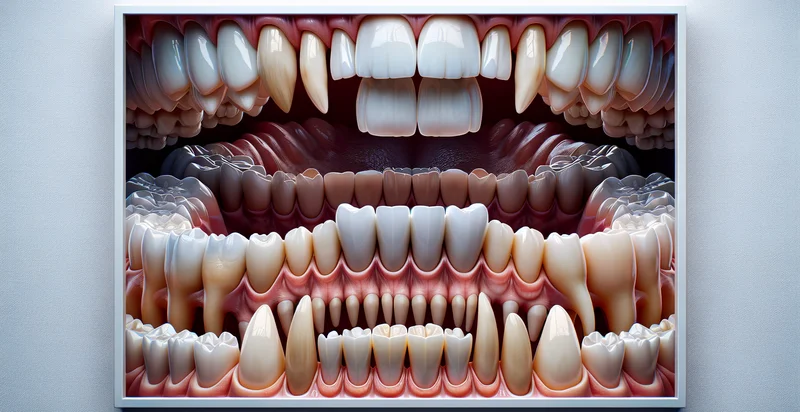Identify tooth mobility
using AI
Below is a free classifier to identify tooth mobility. Just upload your image, and our AI will predict the level of tooth mobility for different teeth types - in just seconds.

Contact us for API access
Or, use Nyckel to build highly-accurate custom classifiers in just minutes. No PhD required.
Get started
import nyckel
credentials = nyckel.Credentials("YOUR_CLIENT_ID", "YOUR_CLIENT_SECRET")
nyckel.invoke("tooth-mobility", "your_image_url", credentials)
fetch('https://www.nyckel.com/v1/functions/tooth-mobility/invoke', {
method: 'POST',
headers: {
'Authorization': 'Bearer ' + 'YOUR_BEARER_TOKEN',
'Content-Type': 'application/json',
},
body: JSON.stringify(
{"data": "your_image_url"}
)
})
.then(response => response.json())
.then(data => console.log(data));
curl -X POST \
-H "Content-Type: application/json" \
-H "Authorization: Bearer YOUR_BEARER_TOKEN" \
-d '{"data": "your_image_url"}' \
https://www.nyckel.com/v1/functions/tooth-mobility/invoke
How this classifier works
To start, upload your image. Our AI tool will then predict the level of tooth mobility for different teeth types.
This pretrained image model uses a Nyckel-created dataset and has 8 labels, including Dislocation, Extrusion, Moderate Mobility, Normal, Severe Mobility, Slight Mobility, Stable and Very Severe Mobility.
We'll also show a confidence score (the higher the number, the more confident the AI model is around the level of tooth mobility for different teeth types).
Whether you're just curious or building tooth mobility detection into your application, we hope our classifier proves helpful.
Related Classifiers
Need to identify tooth mobility at scale?
Get API or Zapier access to this classifier for free. It's perfect for:
- Dental Diagnostic Support: The tooth mobility identifier can assist dentists in diagnosing periodontal disease by accurately assessing the mobility of teeth. This information can help in determining the severity of the condition and guide treatment plans.
- Orthodontic Treatment Monitoring: Orthodontists can utilize the tooth mobility identifier to monitor the effects of braces and other orthodontic treatments on tooth stability. Regular assessments can lead to timely adjustments in treatment strategies, ensuring optimal patient outcomes.
- Remote Patient Monitoring: Telehealth applications can integrate the tooth mobility identifier to allow dental professionals to remotely assess patients’ dental health. This can enhance patient engagement and adherence to treatment while reducing the need for in-office visits.
- Clinical Research: Researchers can use the tooth mobility identifier in clinical trials to quantify tooth mobility in various populations. This data can provide insights into the effectiveness of different dental treatments and interventions.
- Insurance Claims Processing: Dental insurance companies can implement the tooth mobility identifier in their claims processing system to validate claims related to tooth mobility treatments. This can streamline approval processes and reduce fraudulent claims.
- Patient Education Tools: Dental practices can employ the tooth mobility identifier in interactive patient education tools, helping patients understand their dental health better. Visual demonstrations of tooth mobility can effectively communicate conditions and the importance of treatment.
- Predictive Analytics for Patient Outcomes: The tooth mobility identifier can be integrated into predictive analytics platforms to forecast the potential outcomes of various dental treatments. This can help practitioners make informed decisions and optimize patient care by identifying at-risk individuals.


